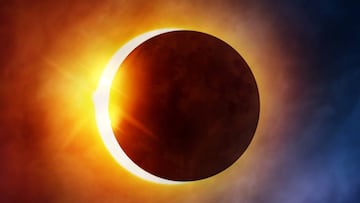Solar eclipse of October 2022: when is it, where can it be seen and how to follow the partial solar eclipse
The second partial solar eclipse of 2022 takes place at the end of this month and will be visible in several parts of the world. Here’s where you can see it

Eclipses are one of nature’s most spectacular phenomena. They can be solar or lunar in nature and NASA defines them as a situation generated “when a planet or a moon gets in the way of the Sun’s light”. In the final days of the month of October, it will be possible to see one of the most anticipated moments of the year from some parts of the world.
This October 25, there will be a solar eclipse. This phenomenon occurs “when the moon gets in the way of sunlight and casts its shadow on Earth. That means that, during the day, the moon moves in front of the sun and it gets dark”, according to the information provided by NASA on its website.
How is a solar eclipse different from a lunar one?
One of the most frequently asked questions about these two events has to do with the differences that separate them. The answer to this question is very simple. The differential aspect between both eclipses has to do with the name they bear.
Another big difference lies in what is blocking the sunlight. In the case of the lunar eclipse, it is the Earth, while in the solar eclipse, it is the Moon. Duration, frequency... are other fields in which both natural phenomena find their inequalities.
The solar eclipse will have a short duration
Talking about the solar eclipse that will occur in October 2022, it will be on Tuesday, 25, when you can see the Moon block the Sun’s light. Keep in mind that its duration is very short, so it can only be seen for around 60 minutes.
The areas of the world that will have a chance to view this celestial marvel are parts of Europe, north-east of Africa, Central, Western and South Asia. The maximal phase of the partial eclipse will be visible in the West Siberian Plain. The partial eclipse ill begin at 8:58 UTC over Europe, reaching its maximum just over two hours later at 11:00 and conclude at 13:02 in the over Asia.





